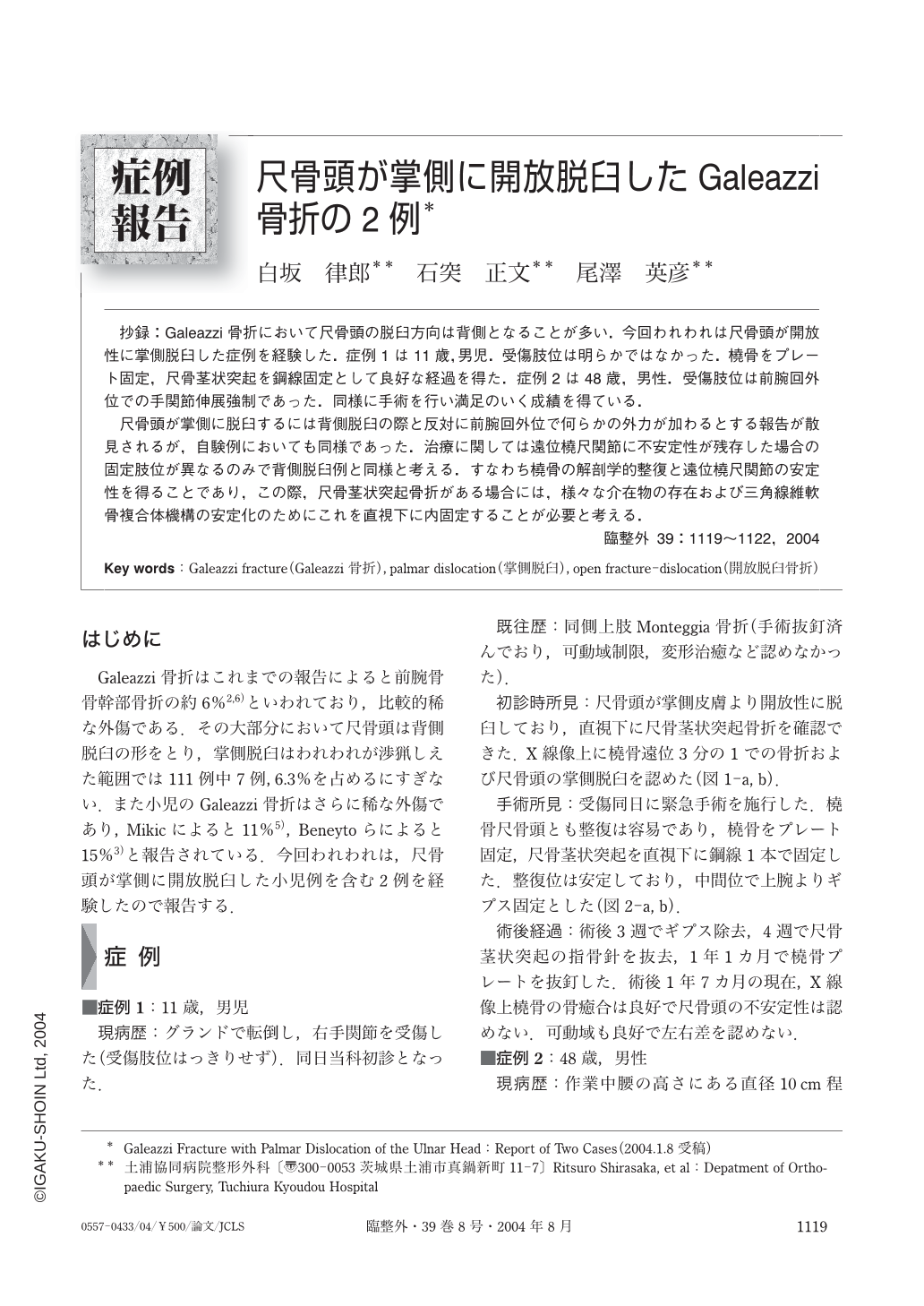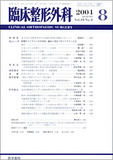Japanese
English
- 有料閲覧
- Abstract 文献概要
- 1ページ目 Look Inside
抄録:Galeazzi骨折において尺骨頭の脱臼方向は背側となることが多い.今回われわれは尺骨頭が開放性に掌側脱臼した症例を経験した.症例1は11歳,男児.受傷肢位は明らかではなかった.橈骨をプレート固定,尺骨茎状突起を鋼線固定として良好な経過を得た.症例2は48歳,男性.受傷肢位は前腕回外位での手関節伸展強制であった.同様に手術を行い満足のいく成績を得ている.
尺骨頭が掌側に脱臼するには背側脱臼の際と反対に前腕回外位で何らかの外力が加わるとする報告が散見されるが,自験例においても同様であった.治療に関しては遠位橈尺関節に不安定性が残存した場合の固定肢位が異なるのみで背側脱臼例と同様と考える.すなわち橈骨の解剖学的整復と遠位橈尺関節の安定性を得ることであり,この際,尺骨茎状突起骨折がある場合には,様々な介在物の存在および三角線維軟骨複合体機構の安定化のためにこれを直視下に内固定することが必要と考える.
Galeazzi fracture is most often associated with dorsal dislocation of the distal radioulnar joint. We encountered two cases of Galeazzi fracture with volar dislocation of the distal radioulnar joint and managed them surgically. The volar dislocation of the ulna is thought to be due to application of force in addition to supination of the wrist. In our case, however, hyperextension with supination of the wrist actually caused the volar dislocation of the ulna. The same as in Galeazzi fractures with dorsal dislocation of the ulna, anatomical reduction of the radius and stabilization of the distal radioulnar joint are necessary. Open reduction and internal fixation of ulnar styloid fractures are recommended to stabilize the distal radioulnar joint and check for soft tissue that prevents the reduction of the distal radioulnar joint.

Copyright © 2004, Igaku-Shoin Ltd. All rights reserved.


